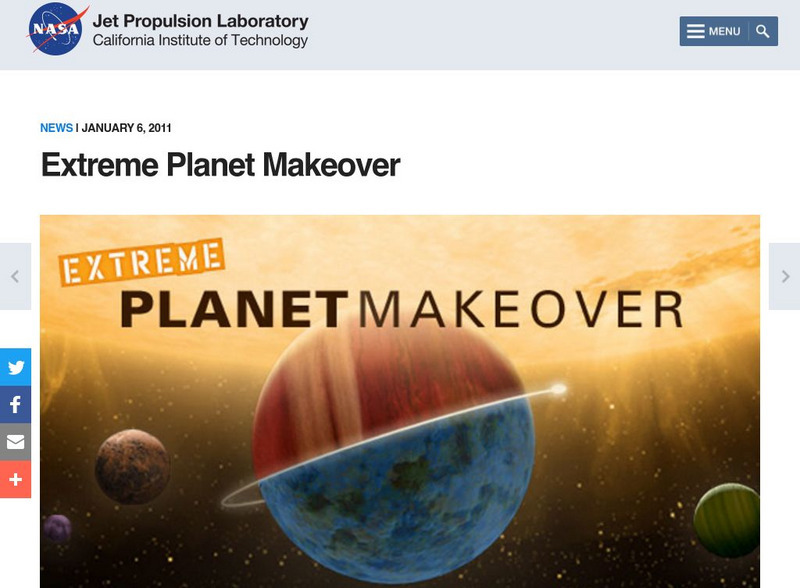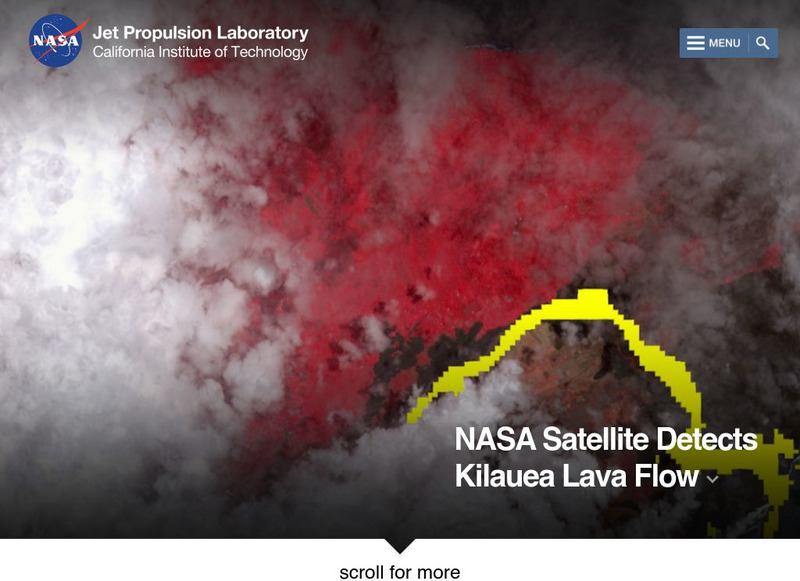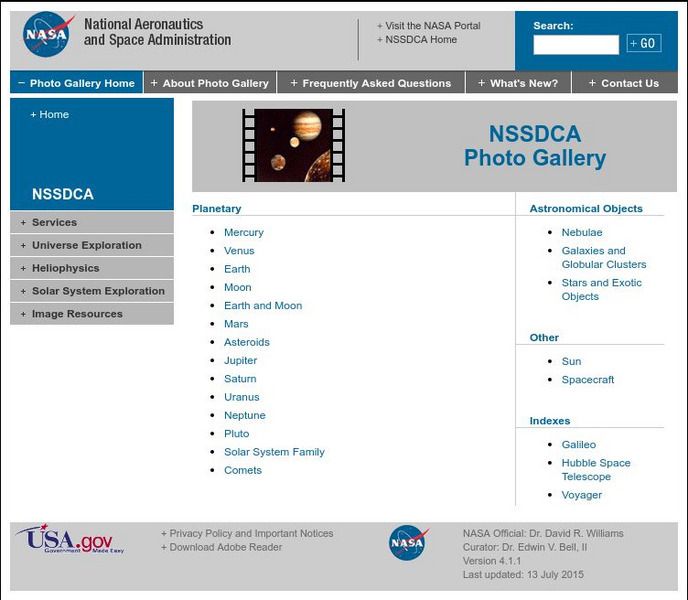Curated OER
Dangers of Radiation Exposure
Students explore sources of high-energy radiation and calculate student exposure to ionizing radiation over the past year.
Curated OER
Moon Watch
Third graders read books about the moon and discuss its perceived changes as it moves across the sky. They observe the moon over the course of a month and chart their observations. They discuss their observations and conduct further...
Curated OER
Prepositions and Prepositional Phrases
In these prepositional phrases worksheets, students review the definitions and examples for prepositional phrases, prepositions, and object of prepositions. Students then complete three pages of activities for prepositions.
Curated OER
Exploring Climate Change with GIS
Students investigate climatological changes that are occurring to the Earth. In this climate change lesson, students access an assigned web site to view maps and lessons that show how climate change makes a difference to life on Earth.
NASA
Nasa: Planets in a Bottle
In this simple lesson, students grow yeast to learn how the climates on each of the nine planets would affect life.
NASA
Nasa: Planet Quest: Extreme Planet Makeover
Activity in which students create a planet based on distance from a star, age, size, and star type. The created planet is evaluated to determine if it can support life.
NASA
Nasa: What Is a Planet?
This lesson teaches students about the characteristics of planets, comets, asteroids, and trans-Neptunian objects. After learning about these different things, students then are to debate about a new object that is found in space.
NASA
Nasa: Students K 4
NASA-sponsored coverage and research on a range of topics related to space exploration -- flying weather stations, comets, first steps on the Moon, and other space-related topics -- are presented in age-appropriate activities, lesson...
NASA
Nasa: 21th Century Explorer: Why Do We Want to Study and Travel to Mars?
This article answers some of the most common questions about Mars: Why is it red? Is there water on Mars? What else have scientists discovered from spacecraft that have landed there? Also, visitors can follow links to learn more about...
NASA
Nasa Star Child: Saturn, the Ringed Planet (Level 1)
A good simple introduction to planet Saturn for young students. Audio content available. Vocabulary words linked to glossary of terms. Printable version available.
NASA
Nasa: The Space Place: Planet X Treme Weather
Ever wonder what the weather is like on other planets besides Earth? This resource explores the extreme weather that occurs on other planets.
NASA
Nasa: The Space Place
Do you know what a solar eclipse is? Or how about a galaxy? Space Place has the answers to all your questions about space! Site includes information to explore about planets, satellites, moons, and much more. Also on the website are...
NASA
Nasa: Our Solar System Lithograph Set
View a lithograph set that includes pictures and brief descriptions of planets, sun, asteroids, comets, meteors, and meteorites. While viewing the lithograph learn important dates and interesting facts about our solar system.
NASA
Nasa: Earth Observatory
The purpose of NASA's Earth Observatory is to provide new satellite imagery and scientific information about our home planet to the public. The focus is on Earth's climate and environmental change.
NASA
Nasa Space Place: El Space Place
NASA's space science site for kids - en Espanol. Features a wide range of activities, including games, projects, animations, and more. Also contains useful information on basic physics, chemistry, and other natural sciences, offering...
NASA
Nasa: Jet Propulsion Laboratory
NASA's Jet Propulsion Laboratory at the California Institute of Technology is "the lead US center for robotic exploration of the solar system."
NASA
Nasa: Mars Exploration Rover Mission
Both historic and up-to-the-minute news regarding the Mars Rover mission. There are activities for children, student projects and other classroom resources. From the "more videos" link you can find a series of animations will take you...
NASA
Nasa: Earth Observatory: The Carbon Cycle
Learn about the element carbon and its importance on the Earth's atmosphere and sustainability of life on the planet. Additionally, understand the role the carbon cycle plays in global climate change over time.
NASA
Dawn Mission: Dawn Classrooms: Dwarf Planets
Students learn about dwarf planet classification through a researched-based instructional strategy called direct vocabulary instruction. Teacher guide and student activity sheet are included.
NASA
Nasa: Kepler: A Search for Habitable Planets: Transit Tracks
Classroom lesson for teaching astronomy uses PowerPoint presentations and illustrations of Kepler's light curves used to discover planets.
NASA
Nasa: Astronomy Picture of the Day: Uranus's Moon Umbriel
Brief overview of Umbriel from NASA. Answers the question "why is the moon so dark"? Provides additional links for more information. A NASA picture of the day.
NASA
Nasa: Astronomy Picture of the Day: Titania, Uranus's Largest Moon
A brief overview of Titania, Uranus's largest moon. Includes a very good description of the moon's surface. A NASA picture of the day.
NASA
Nasa: Mars Exploration: Fun Zone!
This site is filled with information on NASA's Mars Exploration Program. Use this informative site in Spanish or English. Play games while learning about Mars.
NASA
Nasa Space Science Data Archive: Photo Gallery
A website featuring a collection of images from NASA. Collection includes images of planets, comets, nebulae, galaxies, stars, sun, and spacecrafts.


















